
Michael Blann/Digital Vision/Getty Images
A low cholesterol diet plan can help to reduce cholesterol buildup, which possibly leads to heart disease and other health problems. The human body does produce cholesterol, but an excess in the bloodstream is usually the result of a diet high in animal products such as red meat, eggs and whole-fat dairy. Switching your diet to low cholesterol foods such as grains, fruits and nuts can not only reduce your cholesterol intake but also actively fight existing cholesterol.
Nuts
While nuts are high in calories, they have zero cholesterol and have nutrients for heart health in addition to fiber that reduces cholesterol levels. Fiber acts as a cleanser in the bloodstream and can help reduce cholesterol deposits in the arteries. A handful of almonds can help reduce cholesterol by 5 percent, according to the Harvard Medical School, but peanuts, walnuts and hazelnuts are also high in fiber and can have similar effects. The Food and Drug Administration, or FDA, advises against eating more than 1 1/2 ounces of nuts per day to limit caloric intake.
Olive Oil
Olive oil is high in monounsaturated fat, which unlike saturated fat, helps to reduce cholesterol levels. The antioxidants in olive oil make it particularly heart healthy, especially when at least 23 grams are consumed per day, according to the FDA. Olive oil can be used to saute vegetables instead of butter, as a dipping sauce instead of a cream or as a salad dressing when mixed with vinegar.
Fish
A diet rich in fish can contribute to reduced cholesterol levels thanks to the presence of omega-3 fatty acids, which reduce cholesterol and triglyceride levels. Fatty fish such as halibut, lake trout, salmon, tuna and mackerel are especially high in omega-3 fatty acids and should be consumed at least twice per week, according to the American Heart Association. Fish can also be used as a protein substitute for high-cholesterol red meat.
Oats and other Fibrous Foods
A bowl of oatmeal can contribute as many as 2 grams of the 5 to 10 grams of soluble fiber recommended daily by the 2010 Dietary Guidelines for Americans. As with nuts, the soluble fiber in oats helps to reduce cholesterol. Pectin is another source of soluble fiber and can be found in apples, bananas, strawberries and citrus fruits.
Plant Sterols
Plant sterols help to reduce cholesterol by blocking the absorption of it into the bloodstream. In order to get the 2 grams of plant sterols that are recommended for daily consumption by the National Cholesterol Education Program, look for products that have been specially-fortified. Typically, products that contain sterols include some brands of orange juice, yogurt drinks, salad dressings and margarine.
Related Articles

A List of Foods That Contain Choline

Nutrition Information on Blueberries

How to Control Sebum in Hair with ...

How to Reduce Acne Inflammation
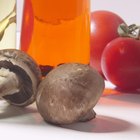
Mineral Oil Vs. Olive Oil

Can You Change Skin Tone with Food?

Peanuts Vs. Pistachios
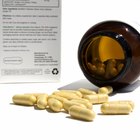
Nac & Hair Growth

What Is the Nutritional Value of Wheat?

L-Lysine for Hair Growth

Nutrition Drinks for Diabetics

Food Sources of Phosphatidylcholine

Vitamins for Mental Alertness

Can Age Spots Be Reversed?
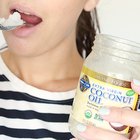
Skin Benefits of Eating Coconut Oil

Asian Secret to Removing Cellulite

Foods to Avoid to Prevent Gout
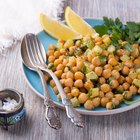
Garbanzo Beans on the Glycemic Index
Diets of Asian Martial Artists
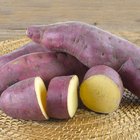
Difference in Sugar Content of Sweet ...
References
Writer Bio
John Csiszar has written extensively on the experiences of everyday life, having published five educational books on topics ranging from information technology and Facebook to how aluminum plays a role in day-to-day life. Csiszar is also an expert on family budgeting and finance, having earned a Certified Financial Planner designation while serving for 18 years as an investment counselor.
Photo Credits
Michael Blann/Digital Vision/Getty Images